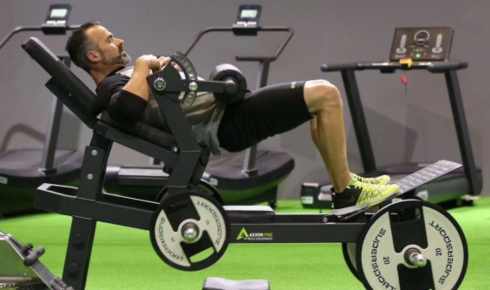Gluteal strength is widely recognized as a contributor to speed, stability and force production in sport. Research examining sprint mechanics, jumping and change-of-direction tasks highlights the gluteus maximus and gluteus medius in hip extension, pelvic control and efficient energy transfer. Fitness experts like Bret Contreras emphasize that well-developed glutes support movement efficiency and may lower the risk of common lower-extremity problems when part of comprehensive training. Conversely, deficits in glute strength or contribution can coincide with less efficient mechanics and a greater reliance on compensatory strategies.
Athletes across disciplines benefit from glute capacity not only for propulsion but also for deceleration and alignment under load. As evidence accumulates, glute-centric work features more prominently in strength and conditioning and in rehabilitation programs.
Defining glute dominance in athletic contexts
Glute dominance describes a movement strategy where the gluteals—particularly the gluteus maximus—provide a large share of hip extension and stabilization relative to other contributors. No movement is “glute-only,” but in sprinting, jumping and rotational tasks, higher relative glute contribution helps maintain posture, drive the center of mass and anchor the pelvis for force transfer up the chain.
Research on sprinting and glute engagement
Studies using surface electromyography and kinematics report substantial gluteal activity during early acceleration, when horizontal force production is paramount. The gluteus maximus contributes to hip extension torque, while the gluteus medius supports frontal-plane control during single-leg stance. Where glute contribution is delayed or insufficient, athletes may lean on hamstrings or trunk strategies, a pattern tied to less efficient sprint mechanics and, in some cohorts, greater soft-tissue strain risk.
Jumping, landing and lumbopelvic control
Vertical jumping relies on coordinated triple extension. Greater hip extensor strength is associated with higher jump performance and improved force absorption on landing in several studies, while inadequate glute medius function is frequently linked with dynamic knee valgus and lateral trunk lean—patterns that can raise joint loading during deceleration and landings. These associations appear more frequently in female cohorts but are not exclusive to them.
Directional loading and exercise selection
Different exercises bias the glutes through different loading vectors. Squats and lunges emphasize vertical loading; hip thrusts and bridges bias horizontal hip extension and typically elicit high peak gluteus maximus activation near terminal extension. Because acceleration in sprinting is strongly horizontal, many programs integrate both vertical and horizontal hip-extension tasks to build comprehensive capacity. Experts like Bret Contreras have underscored that intentional hip drive and focused glute contraction during hip-dominant work help prevent substituting lumbar extensors or quadriceps—a principle that supports cleaner transfer to field performance.
Injury risk and glute development
Lower-body injuries, including hamstring issues and knee problems, are often associated with suboptimal hip control. Programs that improve hip extensor and abductor strength are commonly used to address valgus collapse, knee tracking and lumbopelvic stability as part of broader prevention or return-to-play strategies. Eccentric hamstring work remains a mainstay for hamstring risk reduction; hip-focused training is typically an adjunct that targets proximal control.
Monitoring and measuring progress
True “glute dominance” is difficult to quantify on the field. Practitioners combine performance tests (for example, start velocities, jump height, cutting and deceleration drills), targeted strength measures, video analysis and, when available, EMG snapshots to judge whether programming is improving hip extension contribution and pelvic control. Consistent coaching cues and progressive overload help ensure gains translate to sport-specific tasks.
Implications for strength and conditioning
Modern programs start with a needs analysis and then build hip strength and control alongside global posterior-chain development. Coaches often combine hip thrusts, Romanian deadlifts, step-ups and abduction work with compound lifts and sprint/plyometric exposures. The goal is not to replace foundational strength work but to ensure the glutes are developed across planes and ranges that matter for the sport.
Glute dominance is not a buzzword; it describes a useful performance focus supported by growing evidence. Strong, well-timed glute contribution supports hip extension, stabilizes the pelvis and can ease compensatory load on vulnerable joints. Integrated intelligently, glute-centric training complements traditional strength work and can improve movement quality and output across positions and sports.

